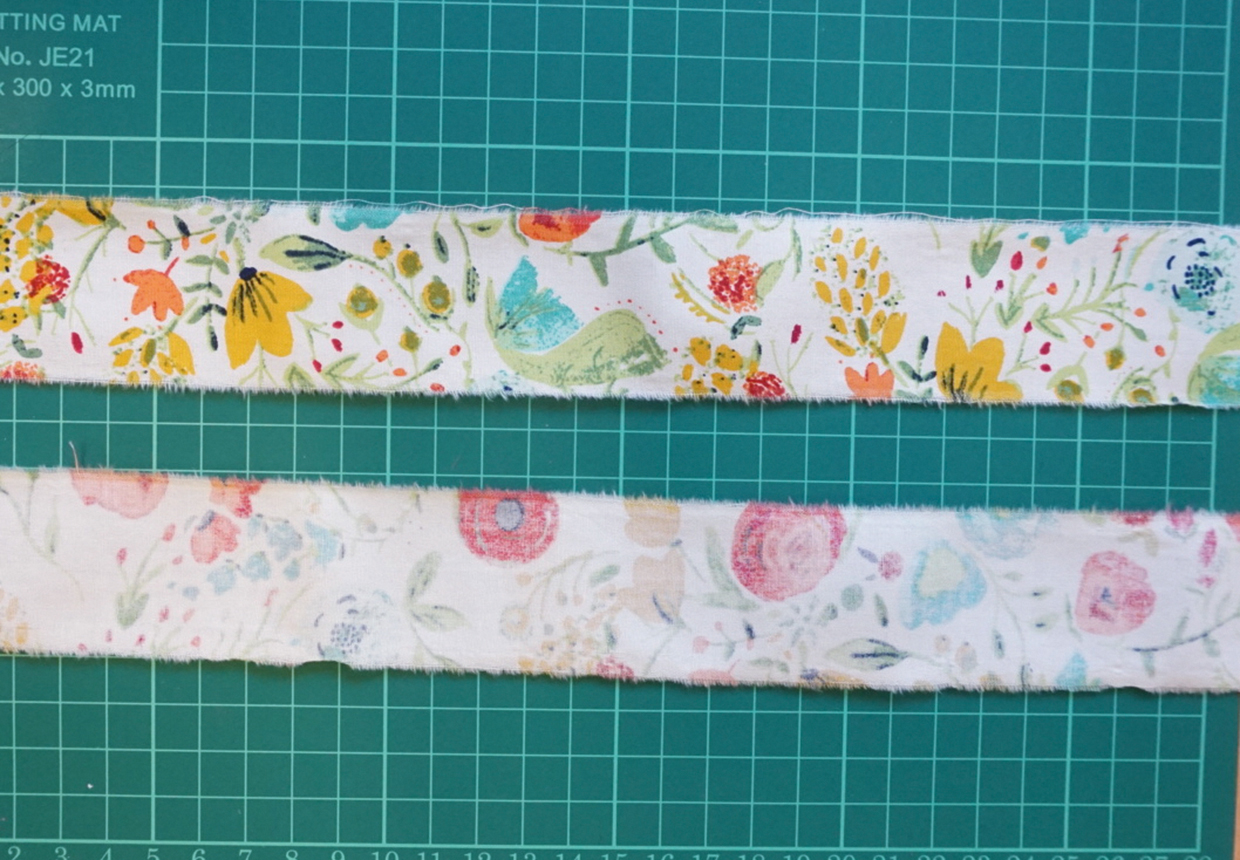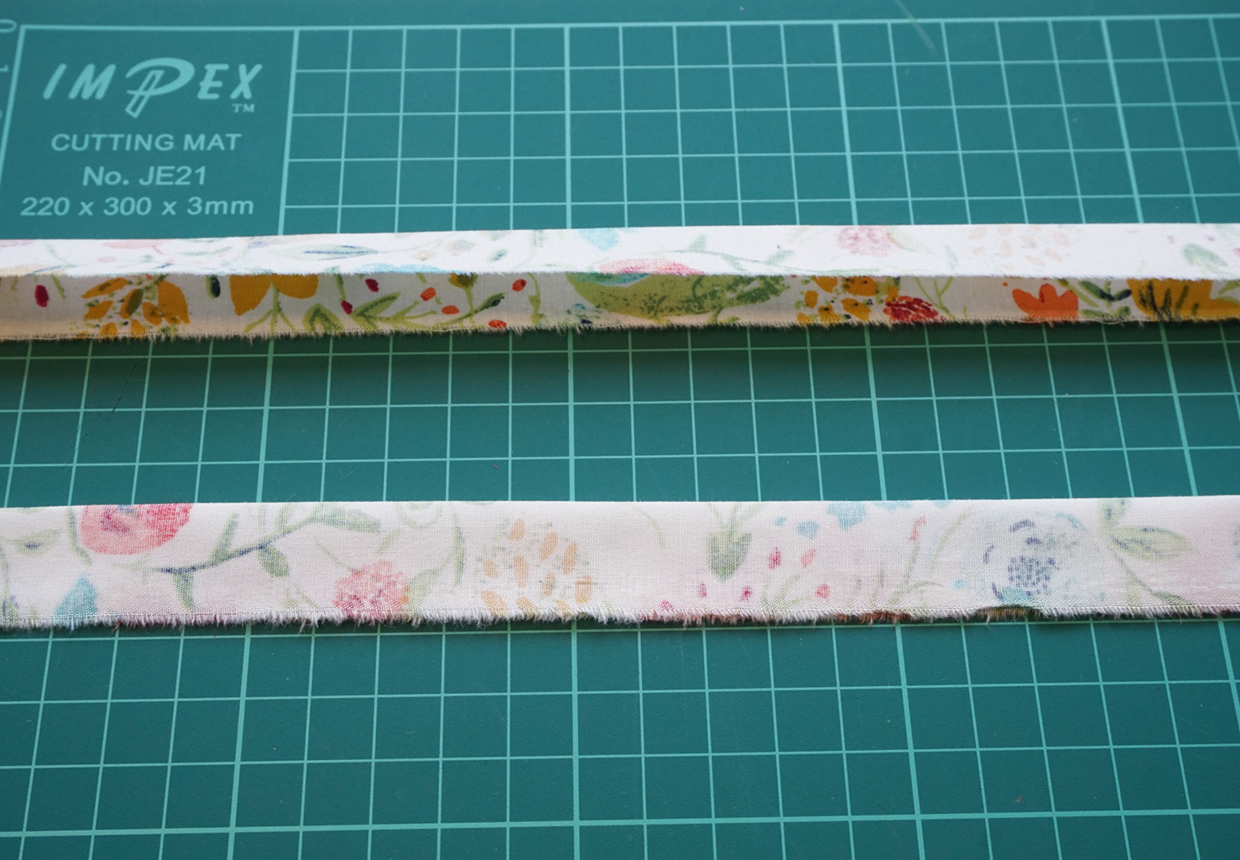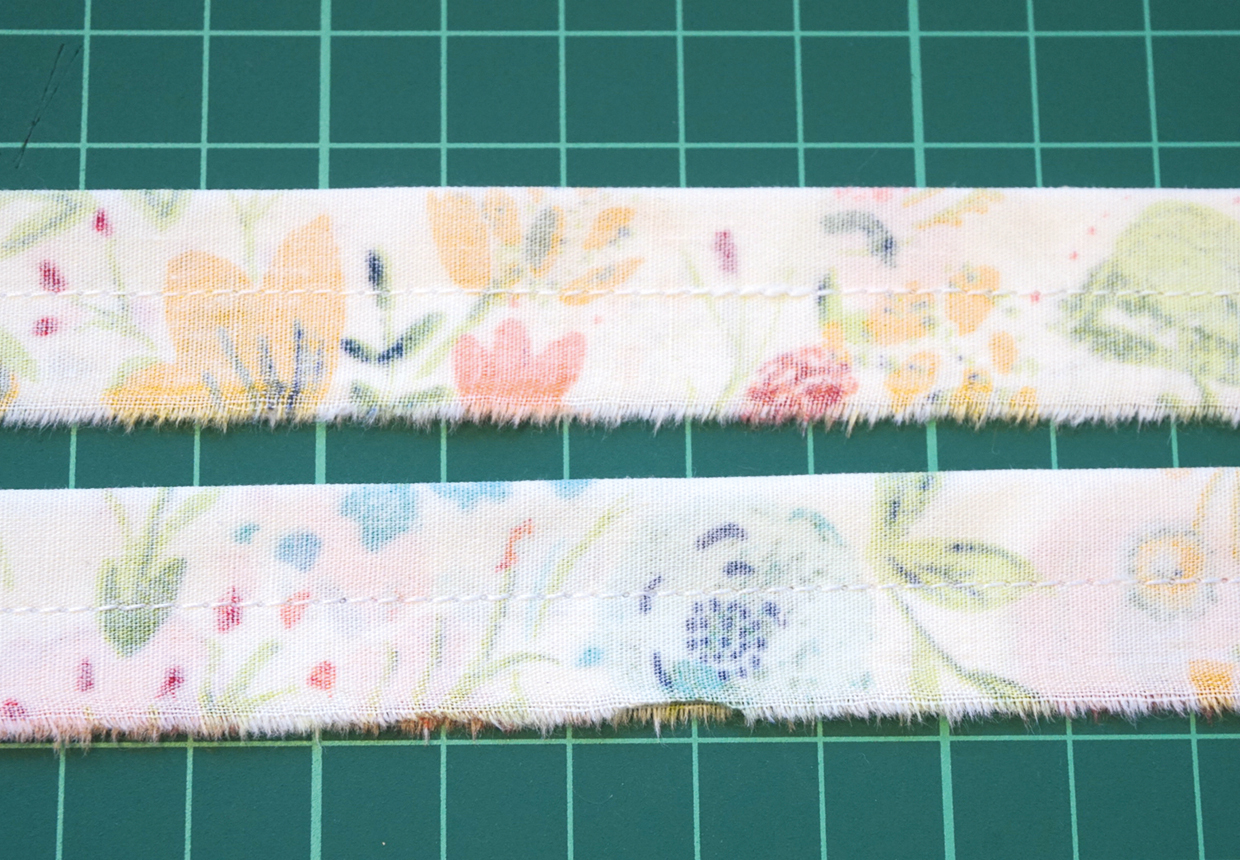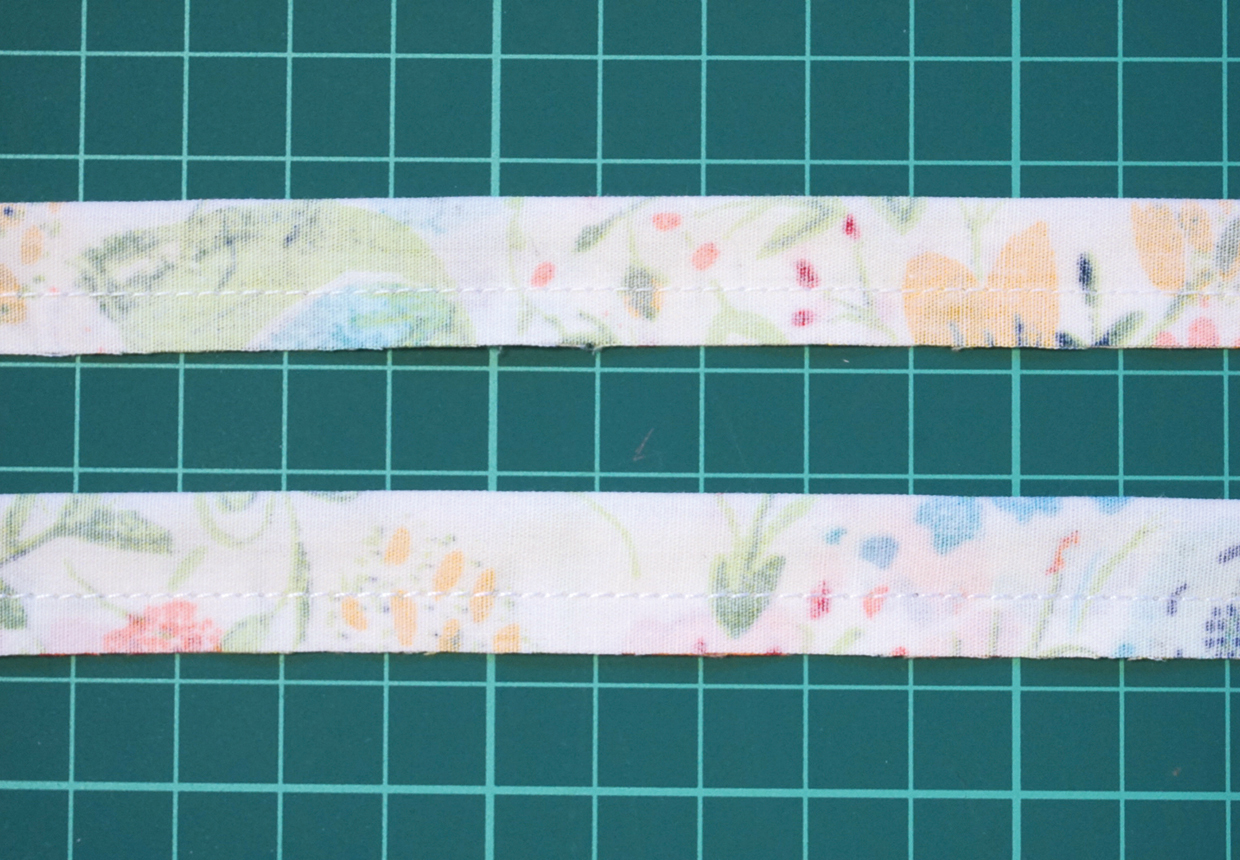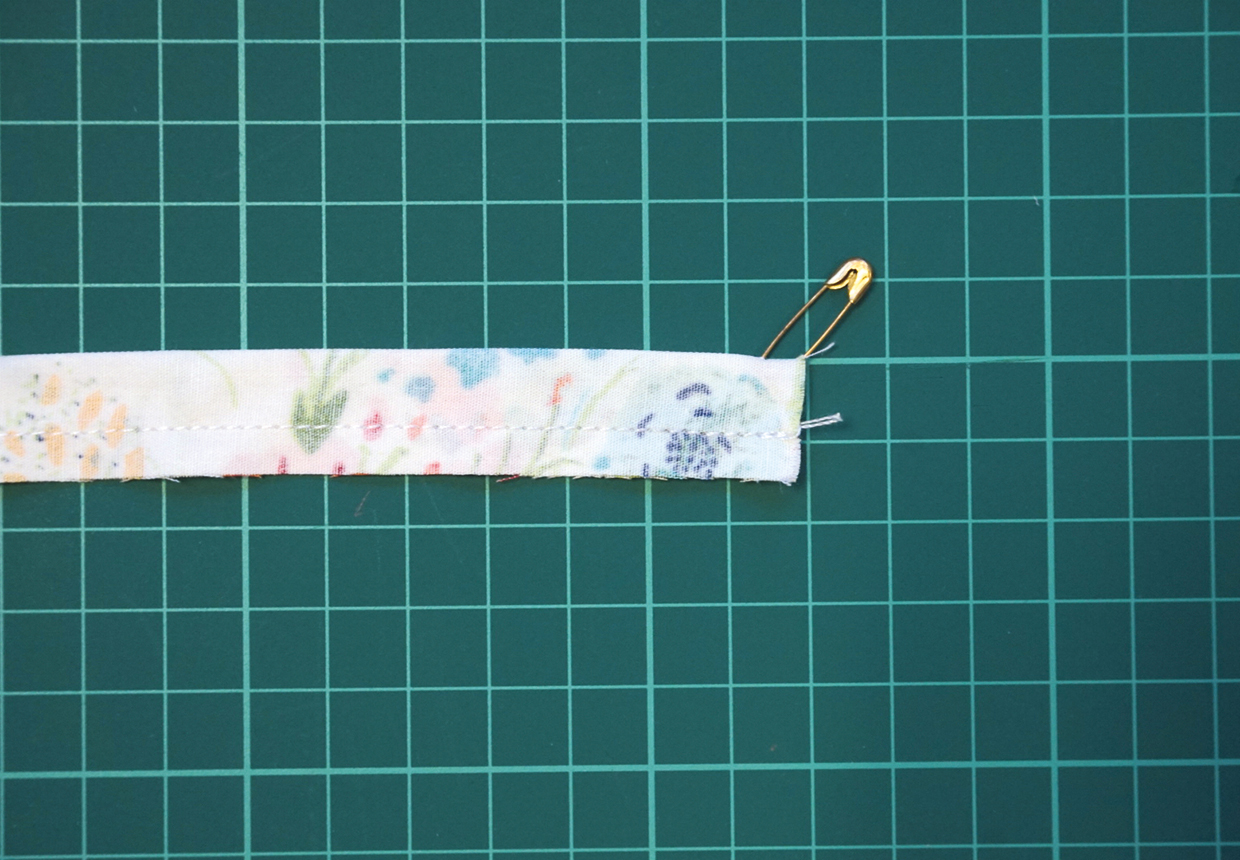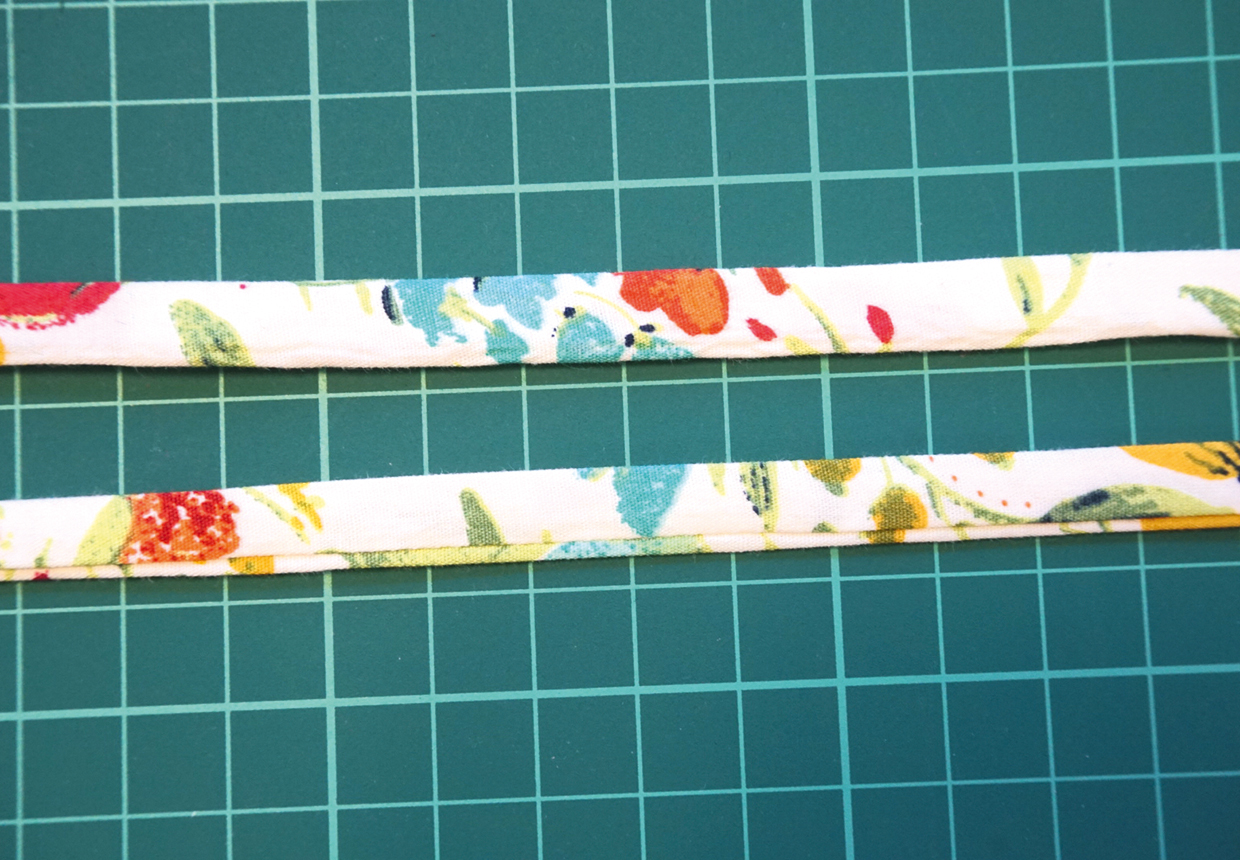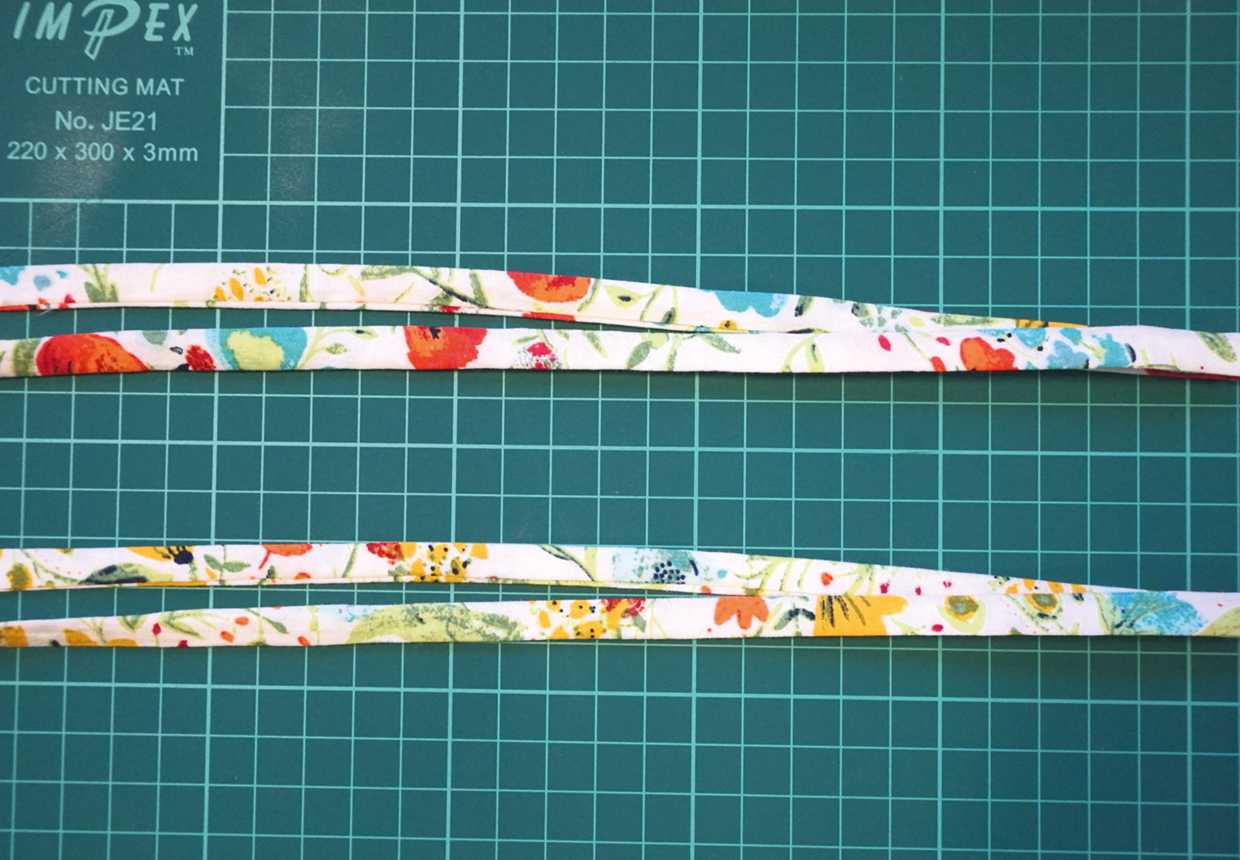While these straps might look like they would be quick and simple to whip up, many sewists can find strap-making frustrating. The process itself – cut, sew, turn and press – is relatively simple, but the grain of the fabric, the length of the stitch and the pressing all make a difference to the quality of the finished straps. Some straps are cut on the bias grain as opposed to the straight grain; bias-cut straps have a little stretch to them and can be easier to turn through to the right side, but they can be a headache for beginner sewists if the true bias grain is missed by the slightest amount.
Fabric grain
It is really important that the grain of the fabric for spaghetti straps is accurate. If you have attempted spaghetti straps before and found that they twisted or puckered, the most common reason for this is the fabric being cut off-grain. To determine the true grain of the fabric (as patterns are not always printed straight!) you can snip into the selvedge edge of the fabric by approx 2cm (3/4in) and rip the fabric from this point. This will rip along the grain of the fabric and is more accurate than cutting with scissors. Once you have this straight grain indicator you will be able to rip the strips for the straps accurately. Alternatively, you could cut the strips with scissors or a rotary cutter, following the ripped edge as a guide.
Neatening the edges
If you have ripped the straps, the ripped edges will be slightly distorted by the ripping process. It is important that the fabric is not distorted for a spaghetti strap that sits perfectly flat. Press the strips to smooth out the edges, and if the edges are still pulled in the rip direction you can lay the strip flat and finger press in the opposite direction to the pull. You can also trim off a few millimetres along each edge to neaten – remembering to remove this amount from your seam allowance later on.
Bias-cut straps
If you are cutting strips on the bias, then rip the fabric selvedge to selvedge to form a 90-degree angle. This will help you to determine the exact 45-degree angle. If you find that your two edges do not form an exact 90-degree angle, you may need to true your fabric, which involves stretching the fabric across the bias to straighten the grainlines. There are many tutorial videos online demonstrating how to do this.
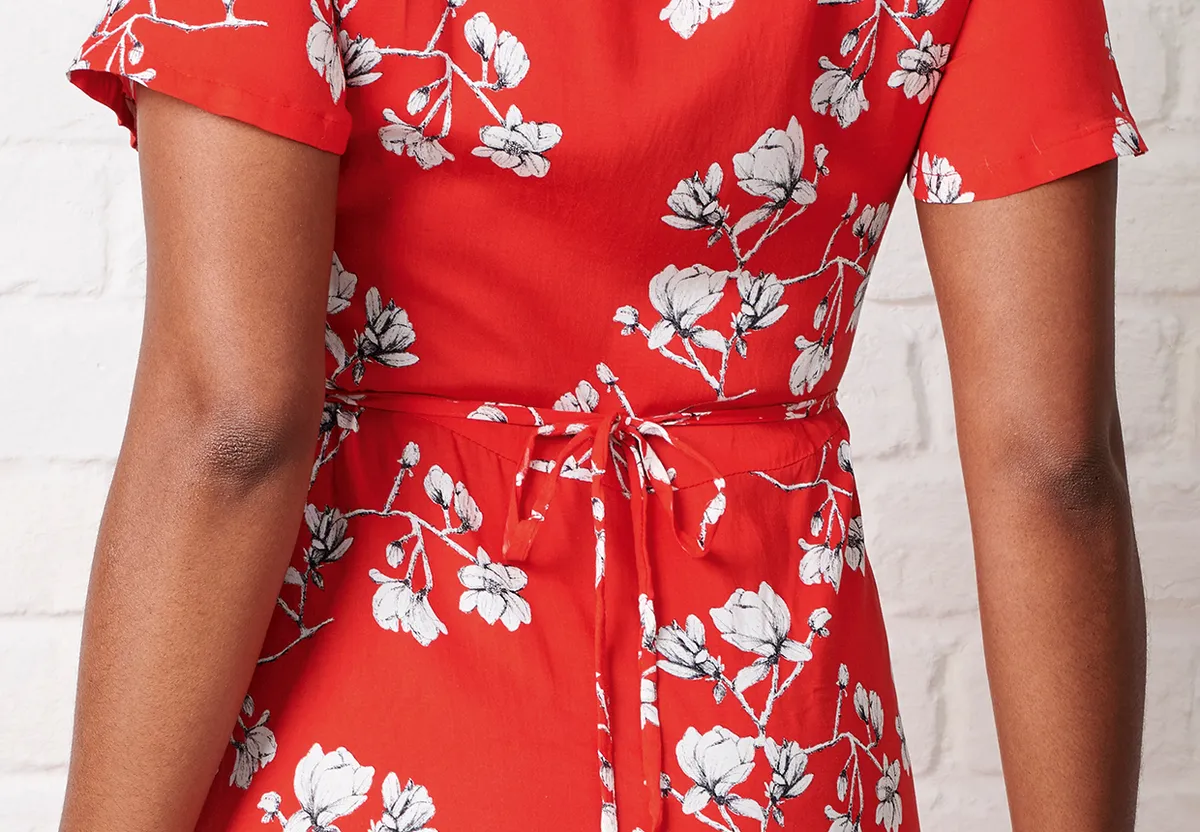
Top tips for how to sew spaghetti straps
Set up your sewing machine following these simple tips to create perfect-looking spaghetti straps.
- Use a stitch length of 3mm for stitching spaghetti straps. The stitches need to be close enough together that the fabric is held together well and do not rip out when turned right side out.
- Use a thread that matches your fabric type. A general all-purpose polyester/cotton thread works well for most fabrics. It is always worth spending a little more on brand name threads as cheaper threads tend to break and tangle easily.
- Use your machine’s standard presser foot and a straight stitch. If your machine allows you to change the needle position you can move it to accurately space your seam allowance so that the raw edge is against the right-hand side of the foot and the needle is at the seam allowance point.
